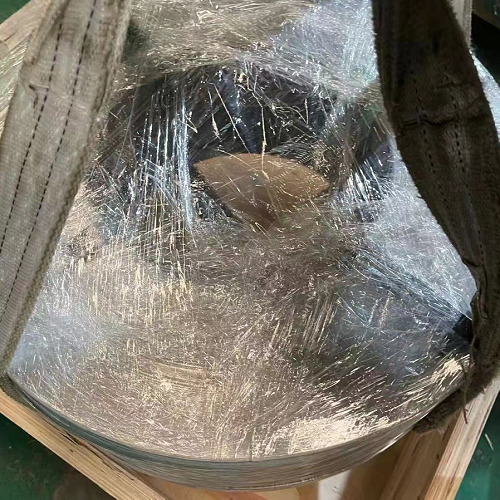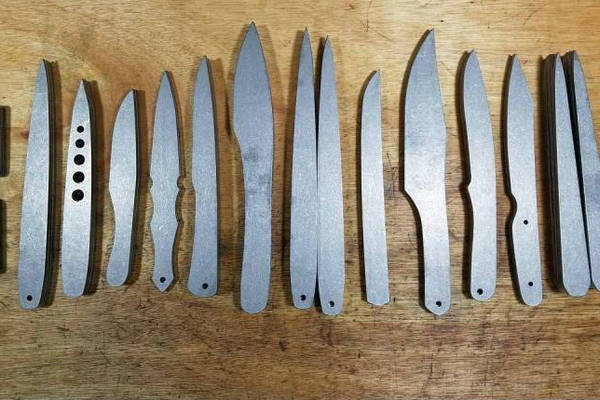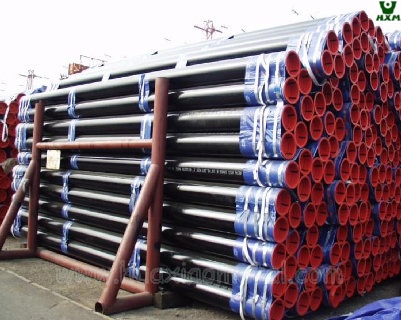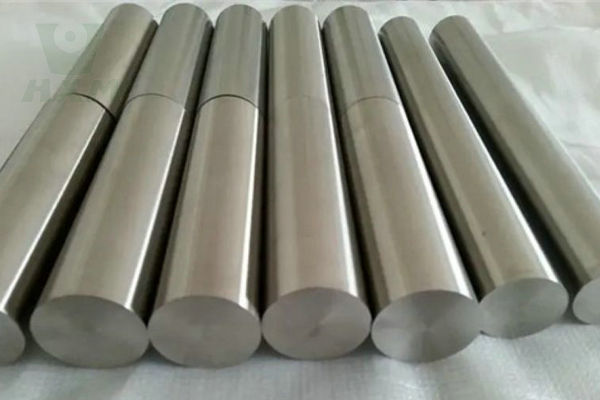Electrical steel is the most important metal functional material for various electrical components. Oriented electrical steel is the core material for making iron cores of various oriented magnetic field electrical products such as transformers, ballasts, amplifiers, voltage regulators, relays, rectifiers, electromagnetic switches, etc. Utilizing the excellent magnetization properties of Goss-oriented grains in the rolling direction, oriented electrical steel is mainly used to make iron cores for oriented magnetic fields to reduce magneto-induced losses and significantly increase the magnetic induction level.
Oriented electrical steel, especially high magnetic induction oriented electrical steel, is an indispensable material for manufacturing large transformers, generators, and motor cores. It has the advantages of energy saving and significant reduction in volume and mass and can meet the needs of large nuclear power plants, hydropower plants, and thermal power plants.
In recent years, China’s significant growth in power generation and the rise of the manufacturing industry have driven strong demand for oriented electrical steel, bringing good development opportunities for China to research, produce, and develop oriented electrical steel.
Grain Oriented Electrical Steel
Overview of the Development of Oriented Electrical Steel
In 1934, Goss of the United States published a patent for the production method of oriented electrical steel sheets. The main feature of this method is that MnS is used as an inhibitor and a secondary cold-rolling method is used. The difficulty of this method is that it must adopt a high-temperature heating process for the ingot, which was discovered by Armco in a hot rolling accident. Due to the hot rolling accident, the ingot was kept in the furnace for a longer time and the temperature of the slab increased.
As a result, it was found that the magnetic properties of this batch of materials were good and stable. It can be said that Goss’s production method of oriented electrical steel is technical know-how obtained from experience and hard work.
In the production and development of oriented electrical steel, the production of high magnetic induction oriented electrical steel (Hi-B) is epoch-making. In the research and development of Hi-B, Professor Kotaro Honda of the Institute of Aerospace Research, University of Tokyo, and researchers Satoru Taguchi and Akira Sakakura of Nippon Steel Corporation must be mentioned. They spent 16 years exploring the production of Hi-B steel by a single cold-rolling method after various tests on nearly 6,000 hot-rolled plates.
Although Nippon Steel introduced the production patent of oriented electrical steel from Armco in the United States in 1958, they still devoted themselves to studying the single cold rolling method of oriented electrical steel. The core of Hi-B steel production is the control of AIN, including the control of smelting composition and hot-rolled plate annealing conditions.
Current Production Process of Oriented Electrical Steel
The primary goal of cold-rolled oriented electrical steel production is to ensure product quality and obtain products that meet quality and technical requirements. Another task of electrical steel production is to strive to increase production.
The completion of this task depends not only on the rationality of the production process but also on whether time and equipment are fully utilized and the technical quality of the operator. In addition, while improving production and quality, efforts should be made to reduce costs.
The production organization of oriented electrical steel includes the organization and preparation of raw materials, the use and maintenance of equipment, and the formulation of technical regulations. Various cold-rolled oriented electrical steels have different production processes and operating methods depending on their uses. The following is a brief introduction to the current production process of cold-rolled oriented electrical steel at home and abroad.
The production of cold-rolled oriented electrical steel includes primary cold rolling and secondary cold rolling. The secondary cold rolling method is generally used to produce general grades of oriented electrical steel. It consists of cold rolling hot-rolled strips to the intermediate thickness and annealing, and then cold rolling to the final thickness for the final annealing.
One of its basic characteristics is that MnS or MnSe is used as a favorable inclusion to inhibit the growth of primary grains; the second basic characteristic is that a medium reduction rate cold rolling is used to form a deformation texture.

The one-time cold rolling method is a method for producing high magnetic induction-oriented electrical steel. It is to cold-roll the hot-rolled strip steel to the finished thickness after normalizing, and then decarburize and anneal. Its production characteristics are:
① AlN+MnS (mainly AlN) is used as a favorable inclusion to inhibit the growth of primary grains and promote grain growth;
② A recrystallized cold rolling deformation texture is formed at a large reduction rate of 85%.
Difficulties and key points in the production process of oriented electrical steel
1) One of the difficulties in smelting is the narrow range of composition control. The allowable fluctuation range of composition is much narrower than that of ordinary low-carbon steel and cold-rolled thin plate steel. In particular, the thinner the plate, the narrower the composition range, which is difficult to achieve with general smelting process equipment and analytical methods. Composition fluctuations directly affect the performance of each process and the final product.
Composition control is mainly carried out using vacuum refining equipment, which involves alloy weighing and rapid and accurate analysis of composition. Reducing composition fluctuations involves the entire process of steelmaking and continuous casting, especially refining and continuous casting.
2) The second difficulty in smelting is purity control. Purity control includes not only reducing oxide inclusions but also reducing elements NB, V, and Ti that form stable carbides and elements Mg, Ca that form sulfides, which directly affect the precipitation behavior of inhibitors. These elements are mainly brought into molten steel with scrap steel, ferroalloys, and refractory materials, and the procurement and management of these raw and auxiliary materials must be strengthened.
3) The third difficulty in smelting is the composition segregation and cracking of the ingot. Due to the high sulfur content and low manganese content of oriented electrical steel, the ingot is prone to internal cracks and segregation. The solution is to adopt low superheat casting, electromagnetic stirring, and light pressure reduction of the ingot, and regularly adjust the casting machine to reduce the central segregation and internal cracking caused by high sulfur and reduce the columnar crystal ratio.
4) The difficulty of the hot rolling process is the high-temperature heating of the ingot. To make inhibitors such as MnS and AlN, especially MnS, completely dissolve, the ingot needs to be heated at high temperatures and kept warm for a period, which is easy to causes oxidation and burning of the ingot. Nippon Steel sprays an antioxidant on the surface of the ingot above 300°C before heating it in the furnace.
Kawasaki Steel sprays MoO3 or CaMoO4 aqueous solution on the surface of the ingot above 500°C to prevent grain boundary cracks caused by high-temperature heating and improve the surface quality of the product. Some manufacturers apply anti-oxidation coatings to the ingot before entering the furnace.
5) The focus of the cold rolling process is high-temperature annealing. For generally oriented electrical steel, to obtain good grain orientation, a slower heating rate should be used to ensure that grains with good orientation grow first and undergo secondary recrystallization. For Hi-B steel, the temperature and atmosphere at each stage of the high-temperature annealing process must be controlled to ensure magnetic properties and form a good bottom layer.
Low-temperature heating process in oriented electrical steel
Lowering the heating temperature of oriented electrical steel slabs has the advantages of avoiding the formation of liquid slag, reducing the maintenance of heating furnaces, obtaining higher metal yields, and preventing undesirable grain coarsening in the middle of the slab. In recent years, when studying the low-temperature heating of slabs, people have added other substances besides manganese sulfide to strengthen the inhibitors to ensure the strength of the inhibitors, such as nitrides and grain boundary precipitation elements.
The solid solution temperature of aluminum nitride is lower than that of manganese sulfide, which is more suitable for low-temperature heating. At present, the production method of the low-temperature heating process of slabs used in industry is to use aluminum nitride as an inhibitor and perform nitriding treatment before the start of secondary recrystallization, or to use aluminum nitride as the main inhibitor and Cu2S and manganese sulfide as auxiliary inhibitors.
The means is to nitride into the steel so that it combines with the original elements in the steel to form aluminum nitride precipitates with an inhibitor function. According to the aluminum nitride scheme, the heating temperature of the slab can be reduced to 1150-1200℃. To obtain a complete secondary recrystallization structure, high magnetism, and good glass film, corresponding composition adjustment, and process improvement are required.
The characteristics of the new Hi-B process studied by Nippon Steel are: aluminum nitride is used as an inhibitor, the slab heating temperature is reduced to 1150-1250℃, and after decarburization annealing, nitriding treatment is carried out in an H2+N2 atmosphere containing NH3. The one-time cold rolling method can produce products with a thickness of 0.18-0.50mm, and it is easier to make new products without glass film.
Sumitomo Metal proposed a low-carbon 1.5%Mn-2.2%Si-oriented electrical steel process with aluminum nitride as an inhibitor to reduce the heating temperature of the slab. Posco Iron and Steel Company of South Korea proposed a process of using aluminum nitride as the main inhibitor, Cu2S, and manganese sulfide as auxiliary inhibitors and heating the slab at 1250-1320℃ to produce general oriented electrical steel and high magnetic induction oriented electrical steel.







